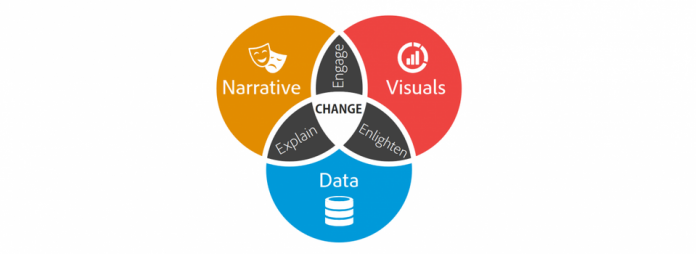Data storytelling is essential in the world of data analysis. Telling a data story involves being able to create a narrative of the process and outcome using data. A lot of data analysts know that they need to tell a compelling story with data. The problem is, not everyone knows how to do it. The worst part is, a lot of people are bad at telling data stories.
Why are People Bad at Data Storytelling?
There are four reasons why so many organizations and people are bad at data storytelling or don’t do it at all.
- Many data analysts aren’t natural when it comes to telling compelling stories. Analytics people aren’t successful or motivated at communicating carbon-based live forms. They gravitate towards unambiguous, structured, and unchanging fields such as statistics, math, and computer science. They like interacting with numbers more than they like interacting with their workmates. This makes sense because most data analysts aren’t into human interaction. It will take time for someone who has a strong numerical focus to transition to become more human.
- Data analysts aren’t good at communicating. According to a survey in 2013, graduates from a data analytical college found that communication was the highest-ranked most desired skill. Weak communication skills may dismiss a data analyst’s insights because of his way of presenting a story. If data analysts aren’t natural when it comes to telling compelling data stories, then they probably have gotten it from school. Most instructors who teach quantitative courses are terrible at storytelling because they think it’s a waste of time. Instead, they focus more on methods.
- Data analysts rely on others to tell the story. When indulging in data storytelling, analysts must believe in their technical capabilities. Good quantitative analysts can say that many people can tell effective data stories, but not everyone can run logistical regression models with heteroskedasticity corrections. Data analysts think that their time and brain should be best used doing quantitative analysis and rely on other people to tell the stories about it. This may sound like a good strategy, but relying on others to translate the analytical results may have its negative impacts.
- Data analysts spend most of their time thinking about how to communicate their results. It takes a lot of time for analysts to tell a compelling story with data. It usually takes half their time just thinking about how to best communicate their analytical results. In fact, many analysts feel reluctant to spend that much time on the issue, even if they’ll be more effective.
These are several reasons why data storytelling doesn’t work very well. For us to address these, we must know the impact of telling data stories to organizations. Knowing its importance can help ensure that we don’t waste all the time and money spent on acquiring, managing, and analyzing data.
Why is Data Storytelling Important?
Below are the reasons why people who love data and analytics should be able to tell compelling data stories:
- Data storytelling is an effective way to translate data into a piece of interesting information. Stories are and will always be effective tools in transmitting human experience. Stories that involve data and analysis aren’t much different. A narrative is our way of simplifying and making others understand a complex world. It supplies insight, context, and interpretation. All of these make data more interesting and relevant, and analytics more meaningful.
- It triggers the audience to take action. With analytics, the goal is to change how the audience takes action or makes a decision. As the storyteller, you’re attempting to persuade, trust, and inspire change with these powerful tools. Being able to compel change has nothing to do with how impressive the analysis is or how high-quality the data is. The audience must be able to understand the story. You may need to have a narrative or visuals, as long as you have a story.
- The audience needs proof. Most people won’t be able to understand the details of analytics. But they will always ask for evidence of data and analysis. Data stories that incorporate data and analytics tend to convince the audience more, unlike those that are based on personal experience and anecdotes. The most compelling data stories are those that combine data and analytics, and examples or points of view, which involve organizations and real people.
- Data storytelling helps save time. Data preparation and analysis take quite a while, but the audience will need a quick explanation of those activities. Not only is it time-consuming, but it’s also boring to share all of the details of the quantitative analysis with the audience. Effective storytelling can help analysts in delivering their findings in a snappy way. As they say, stories fit the bill.
- It allows data analysts to explore different types of storytelling. There are different ways to tell a data story. Data can help analysts in narrating as many stories as there are angles. So, if an organization knows the different types of stories that analysts can tell using data and analytics, then there’s a higher possibility for the analysts to explore different types over time. Most importantly, the range of the story should go beyond the basics. It shouldn’t just be a simple “here is what happened” kind of reporting story.
Despite these reasons for the importance of data stories, many data analysts are still not very good at telling them. It could mean that a lot of analysts don’t have an impact on actions and decisions, and that shouldn’t be the case. Learn how to harness the power of data storytelling, and the science of human vision to generate compelling reports, dashboards, and charts. Learn to inspire and trigger high-quality and data-driven decisions.
You can find out more about data storytelling and take charge of this important tool for data analysis. Check out StoryIQ and learn more about the educational courses that will teach you how to tell a data story effectively.

